Snapdragon 865 vs Apple A13 Bionic: The Ultimate Showdown
[the_ad id='1307']
Qualcomm launched its top-tier Snapdragon 865 SoC in Hawaii yesterday and it’s already making quite a buzz. The new processor comes with 5G support and will power a host of flagship 5G phones next year. However, many smartphone enthusiasts are keen to pit Snapdragon 865 against the Apple A13 Bionic, its long-time arch rival. So, we bring you an in-depth article on Snapdragon 865 vs Apple A13 Bionic with many tidbits along the way. We have included benchmark scores and many other key metrics to find out who wins between the latest 865 SoC and A13 Bionic. With that said, let’s begin the article without any further delay.
Spec Sheet: Snapdragon 865 vs Apple A13 Bionic:
Before we dive deep into our analysis, have a look at the specifications of both the chipsets.
| Snapdragon 865 | Apple A13 Bionic | |
| CPU Core | Kryo 585, Octa-core CPU | Hexa-core CPU |
| CPU Architecture | 1x 2.84GHz (Cortex A77) 3x 2.42GHz (Cortex A77) 4x 1.8GHz (Cortex A55) | 2x 2.65GHz (Lightning ) 4x 1.8GHz (Thunder) |
| CPU Clock Speed | Up to 2.84GHz | Up to 2.65GHz |
| Process Technology | TSMC's 7nm FinFET | TSMC's 7nm N7P |
| GPU | Adreno 650 | Apple-designed four-core GPU |
| Machine Learning and AI | Hexagon 698 DSP | Eight-core Neural Engine |
| ISP | Spectra 480 | Apple-designed Image Processor |
| Camera Capability | Up to 200 MP | N/A |
| Video Capability | 8K @ 30 FPS, 4K HDR @ 60FPS, 4K @ 120FPS | 4K HDR @ 60FPS |
| Charging | Quick Charge 4+ | Fast Charging |
| Modem | Qualcomm X55 5G Modem 7.5 Gbps Peak Download 3 Gbps Peak Upload | Intel's XMM 7660 LTE Modem 1.6Gbps Peak Download 225Mbps Peak Upload |
| WiFi Support | Wi-Fi 6-ready | Wi-Fi 6-ready |
The Showdown: Snapdragon 865 vs Apple A13 Bionic
Here, we have thoroughly discussed some major points of both the processors including CPU, GPU, AI and ML, Camera Capability and Modem. We have included many metrics like benchmark scores, various test results and official figures to reach a conclusion about both the chipsets. Also, if you want to know who wins between Snapdragon 865, 855+ and 855, head over to our separate article. Now having said that, let’s go through the article.
While it’s a settled debate that the A-series chips designed by Apple is ahead of Qualcomm’s Snapdragon chips, in this section, we are going to find out the degree of gap between the latest Snapdragon 865 and A13 Bionic. To give some perspective, A13 Bionic was already 50% more powerful than last year’s Snapdragon 855. And according to Qualcomm, the newer Snapdragon 865 is 25% faster than its predecessor. So we can reach to a conclusion that Snapdragon 865 has reduced the performance gap to 25% with respect to A13’s performance. However, it must be noted that we are talking about the single-core performance of both the chips. If you count in multi-core performance then they are almost neck and neck.
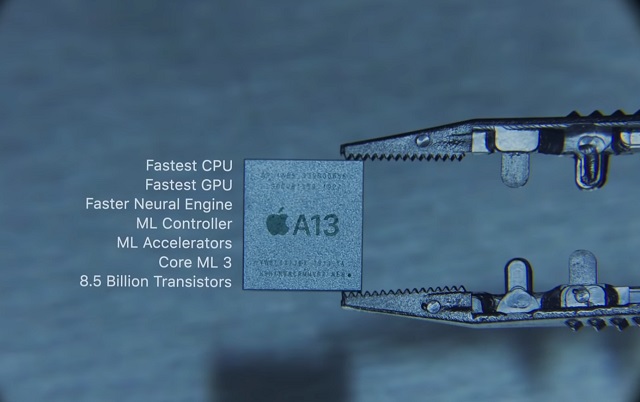
If “Ice Universe” from Twitter is to be believed, this is what the Geekbench score of Snapdragon 865 looks like. To give you an idea, the A13 Bionic scored 5472 in single-core and 13769 points in the multi-core test. So clearly, the Snapdragon 865 is not a slouch in comparison to A13 Bionic when it comes to heavy multi-threaded tasks. However, when you talk about the raw performance of a CPU and how much it can push further, the A13 Bionic is still the reigning king. Its two big Lightning cores are one of the most advanced and powerful CPU cores available in mobile phones right now.
Snapdragon 865,Awesome! pic.twitter.com/zXxxD76TIe
— Ice universe (@UniverseIce) December 4, 2019
From the above comparison, we get a good idea that Snapdragon 865 is a pretty capable chip and almost there with A13 Bionic. But the real difference lies in power efficiency and that’s where Apple takes the lead again. During the iPhone launch in September, Apple was jubilant to announce that its A13 chip uses 40% less power than its predecessor while at the same time improving the performance by 20%. That’s a huge turn in Apple’s history of chip development. And that is why you are seeing reports of excellent battery life on the new iPhone 11 series despite having relatively smaller batteries than most Android phones.
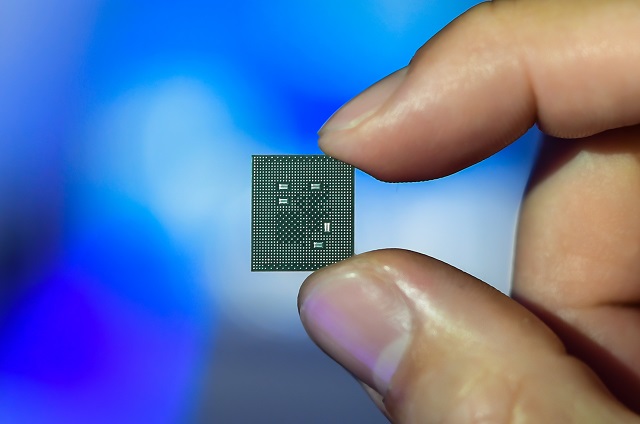
On the other hand, we did not see Qualcomm stressing about power efficiency during Snapdragon 865’s launch. The company did mention that the 865 SoC is 25% more power-efficient than its predecessor, but again, it’s very much on the expected lines. It seems Qualcomm is too reliant on its “Prime” core and not making ground-breaking changes to its BIG-big-little architecture. In the power efficiency area, I would say the A13 Bionic is much better at handling low-powered tasks.
Talking about the GPU, Apple has long-ruled this front and even after the launch of Snapdragon 865 with Andreno 650 GPU, it does not change Apple’s standing. Apple designs its own GPU and it comes with four cores. But the distinctive part about A13’s GPU is that it delivers 20% more performance by drawing 40% less power in comparison to A12 chip. That’s simply insane, right? Apart from that, the A13 offers a Metal Engine to improve the GPU performance significantly. The Metal Engine allows developers to create Sparse textures, Rasterization Rate Maps, Vertex Amplification and more for intensive games and graphics-heavy content.
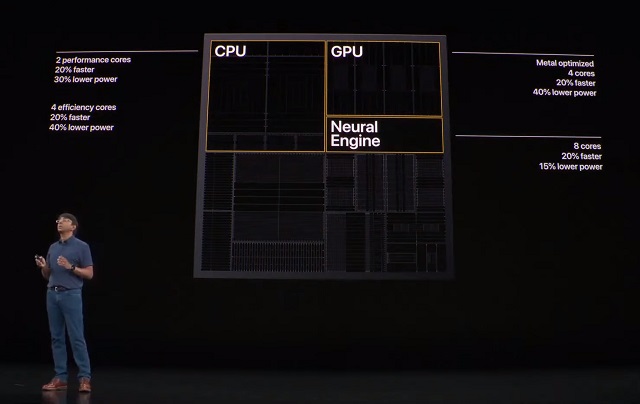
While talking about Adreno 650, it has got a good 25% bump in graphics performance and also draws 35% less power from its predecessor. That’s a great jump from Qualcomm’s front too. Other than that, the Adreno 650 GPU brings Elite Gaming experience, support for 144Hz display and Desktop Forward Rendering for desktop-class gaming on mobile phones. All in all, it seems Qualcomm is catching up with Apple’s custom GPU.

However, if you see consider the benchmark score of A13 Bionic in the GFX 3.1 Manhattan test then it’s around 120 whereas the last year’s 855 could only muster up to 71 points. So with a 25% increase in performance this year, the Snapdragon 865 should yield a score somewhere below 90 which is still lesser than A13’s score. However, it’s still theoretical and we will have to wait for some real-life tests so stay tuned with us.
In terms of AI and ML, Qualcomm has been showing some great promise, but with the launch of A13 Bionic, Apple had also pushed the envelope. The Snapdragon 865 packs the 5th-gen AI engine which means it’s already optimized for various use-cases like translation, voice recognition, object tracking and more. Apple started working on bringing support for on-device AI and ML starting with the A11 chip. Apple calls it the “Neural Engine” and it’s available on the A13 Bionic as well. But how powerful the Neural Engine is and can it compete against the Hexagon 698 DSP on the Snapdragon 865? Let’s find out.

First of all, Snapdragon 865 has an upper hand when it comes to AI and its application in day to day usage. For example, along with the Hexagon 698 DSP, the 865 SoC packs in a Tensor Accelerator which works hand in hand with Google’s TensorFlow library. Already many of the Google apps including Google Recorder, Google Lens, etc take advantage of this feature and it’s only going to get better. On top of it, the Tensor Accelerator on 865 is 4x more powerful and 35% power-efficient than its predecessor so that is absolutely great. To give you a conclusive number of how powerful the AI module on 865 SoC is, it can deliver 15 trillion AI operations per second without breaking a sweat. That’s absolutely bonkers, right?
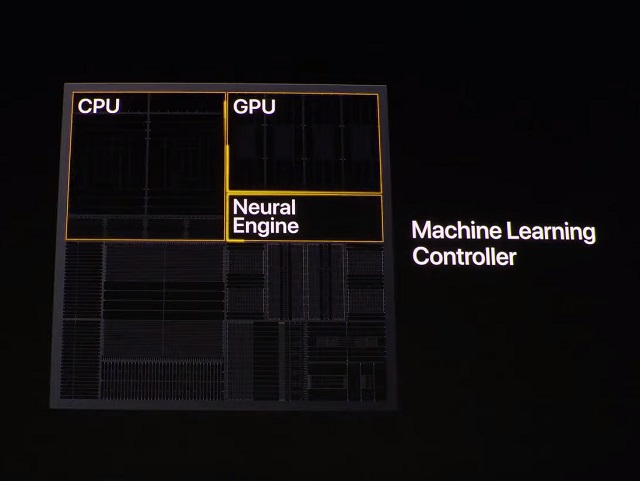
Now let’s talk about the 8-core Neural Engine on the A13 Bionic. According to Apple, it’s 20% faster and takes up 15% less power than the A12 chip from last year. But when pitted against the Snapdragon 865, the A13 Bionic is only capable of one trillion AI operations per second. That’s around 15 times lesser than what Qualcomm’s AI engine is capable of. All these numbers tell you that Qualcomm is far ahead in AI and ML operations and the A13 does not come close. The only saving grace for Apple is that with A13, developers can now run their Core ML models locally on their device, but that’s about it.
When it comes to camera capability, the Spectra 480 ISP (image signal processor) on the Snapdragon 855 has seen a huge improvement. It can now shoot 8K videos at 30FPS and can take images of up to 200 megapixels. That’s completely insane for a mobile phone. But that is not all, you can now take 960FPS slow-motion videos at HD (720p) quality. All this is possible because of the Gigapixel Technology on the Spectra 480 ISP which allows the device to take such high-resolution photos and videos in a fraction of a second.
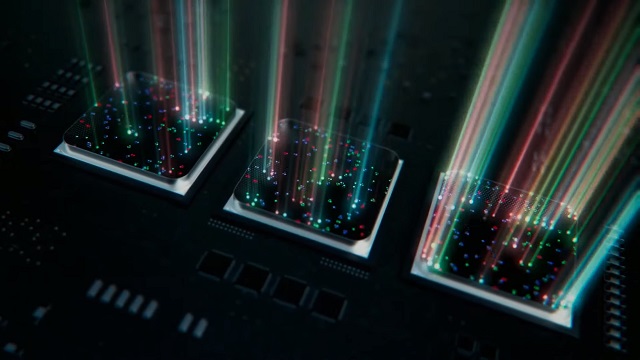
Moving to the Apple A13 Bionic, the company has not shared many details about its core ISP architecture except that it’s an Apple-designed Image Processor. Whatever you make out of it, all we can see is Apple has finally made its foray into computational photography and the results are revealing. The iPhone 11 series produces excellent Night Mode photos, detailed and sharp pictures that easily rivals the best Android phones including the Google Pixel’s Camera. Clearly, the custom ISP and Neural Engine is paying off and Apple is no longer behind Android when it comes to photography. To talk about its video capability, well, it can’t do 8K videos yet, but you can surely shoot super steady 4K videos at 60FPS with HDR.

To sum it up, Qualcomm certainly has a more powerful ISP. However, the camera capability is solely not judged by the ISP, but also the GPU and CPU. Since Apple has lead in those areas, it continues to produce highly stable and sharp footage than the majority of Android phones despite having more features on paper. Until Qualcomm does not improve its core CPU and GPU architecture, we are not going to see super stable videos on Android phones. However, stay tuned with us, as we will carry out many advanced tests to check if the improved GPU and ISP on Snapdragon 865 do any wonders to video stability.
Now coming to the Modem section where the Snapdragon 865 outrightly wins against Apple A13 Bionic because it comes with the next-generation X55 5G module. As we already know, the A13 Bionic is equipped with Intel’s XMM 7660 Modem which is limited to LTE. So the comparison between 865 SoC and A13 Bionic is literally Apple and Oranges. However, to give a bit of context, Intel has exited the modem business so now Apple has no option, but to ship iPhones with Qualcomm modems from next year. And many are hoping that the next generation of iPhones will come with the same 5G module. But until that happens, the X55 modem on Snapdragon 865 is far superior to anything available in the market right now.
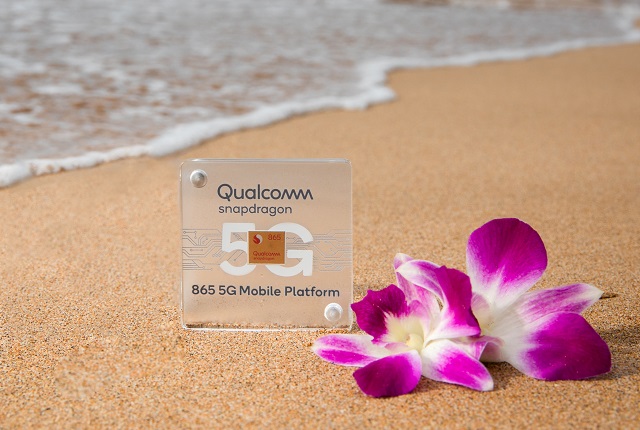
Snapdragon 865 vs Apple A13 Bionic: And the Winner is?
Coming to the conclusion, it looks like Snapdragon 865 is still behind Apple A13 Bionic in terms of CPU and GPU capability. However, in areas like AI and ML, Qualcomm has done a tremendous job and leapfrogged to at least a generation ahead. And just like every year, there is support for more Pixel count and resolution. Not to mention, Qualcomm has always been at the helm in the Modem business so there is that.
I will say this. Just last year, it felt that Qualcomm was many steps behind Apple when it came to smartphone chipsets. However, it seems that the company has realize its fault and is now on course to give serious competition to Apple’s flagship chip. We will have to wait and see what A14 bionic brings this year, but it’s apparent that the gap between Qualcomm and Apple chips is narrowing.
[the_ad id='1307']
Source link
[the_ad id='1307']